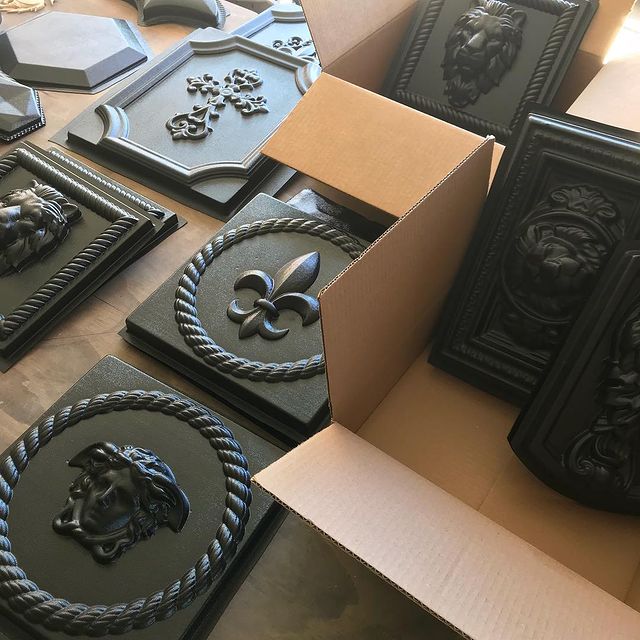![]()
Track down the different sorts of etching earth with specific characteristics that you need to get settled inside case you’re enthusiastic about learning the creative work of soil etching. The etching is likely the best sort of convincing work of art. It offers you an opportunity to restore your idea. The solid sort of figure helps in passing on your idea and thought in a more grounded way so your message is heard by the majority. Models are illustrative. Casting Concrete Molds They are an ideal strategy to take the likelihood that is in your brain and move it to a physical, significant space. Also, they are an ideal development to any void space. Models are a mind-boggling kind of workmanship, which is the explanation you are bound to find the best figures in prominent regal homes and old, social inheritance objections. Even today, on the off chance that you wish to add a scramble of elegance, power, and custom to any inside, having figures associated with the expressive topic is the most reassuring technique for achieving the aggregate of that. Mud etching is the art of framing, anticipating, or cutting an adaptable material. It is a sort of visual workmanship that requires center, thought, responsibility, or all the more all, vision. It is an adequately dreary activity. It works in three estimations.
At first, the path toward etching used cutting and showing with metal, earthenware production, stone, wood, and various materials, yet in the high-level time frame, there are no limits or limitations concerning the material and cycles used. Different sorts of materials are used for etching today, with the most standard being earth. You should think about the soil you used at school when you were young. That earth isn’t the singular sort of mud used in etching. There are various sorts of etching mud that you probably won’t have contemplated starting at quite recently. If you are developing an interest in etching, the essential thing that you should think about is the various sorts of etching muds that are open today.
Testing Clay advisability for Sculpting
Different sorts of soil are open today, anyway few out of every odd one of them is fitting to be used in etching. If you find a bit of soil that you need to use for etching, it is more brilliant to test it before getting it in mass. Testing earth’s sensibility for etching is truly immediate. You ought to just shape a chamber with the earth which is around four crawls in length and a huge bit of an inch in width. Bend this chamber and notice eagerly. If you see breaks in the soil, the earth is exorbitantly dry, or it has too little adaptability to be used for etching. Nevertheless, if the chamber winds effectively, without giving any signs of sand or rock, you can use it for etching. In the last case, you most likely will not need any refining moreover.
Sorts of Sculpting Clay
1. Water-Based Clay
As the name shows, water-based mud is earth mixed in with water. It is conservative and extremely easy to work with. Water-based mud dries out rapidly as the water content scatters. The fast-drying of water-based soil is one of the features that make it standard. It was first advanced to be used in the etching of the animatronic models for Disney. This soil was known as WED earth (Walter E. Disney). The properties of this sort of earth resemble many oil-based soil sorts that are renowned today. Water-based earth is proper for little errands. Since it will overall dry out at whatever point put something aside for quite a while, it is best used for projects that use up the mud before it dries out. In any case, in case you need to store water-based mud for a little while, it should be full in a fixed shut load with a light sprinkle of water once each month. Guarantee that you don’t make the mud excessively wet since it sticks and self-destructs.
2. Oil-Based Clay
Oil-based spots of the earth are made of a mix of oils, waxes, and mud minerals. The fundamental benefit of oil-base earth over water-based mud is that it will not dry out regardless when set uncovered in dry conditions. Things or models that are made with oil-based mud are not pottery creations as they can’t be ended. Since oil-based earth contains oil, its adaptability is impacted by the temperature. The thickness of the oils shifts with temperature, and along these lines, by extending or decreasing the temperature, you can adjust the consistency of the earth, and thusly, its flexibility. Oil-based mud is by and large standard with development specialists (used in Claymation) since it will, in general, be re-used, and thusly, thinks about its turning and moving. In case you wish to make silicone molds, you need to use earth that doesn’t contain sulfur. Without sulfur groupings of oil-based bits of earth are open with no issue.
Polymer Clay
Polymer earth is a regular term that is used for human-made etching/showing mud. Stepping Stones molds This sort of etching mud is fragile and adaptable yet till it is warmed. In the wake of warming, polymer mud cements forever. If not warmed, polymer earth will not at any point dry out.
Polymer soil is included polyvinyl chloride (PVC) that is mixed in with a stabilizer, plasticizer, oil, and different shades that give it a wide show of tones that it is open in. The uncured kind of polymer earth is a vinyl mix with filler that outlines a player, anyway when it is diminished, it becomes solid vinyl.
